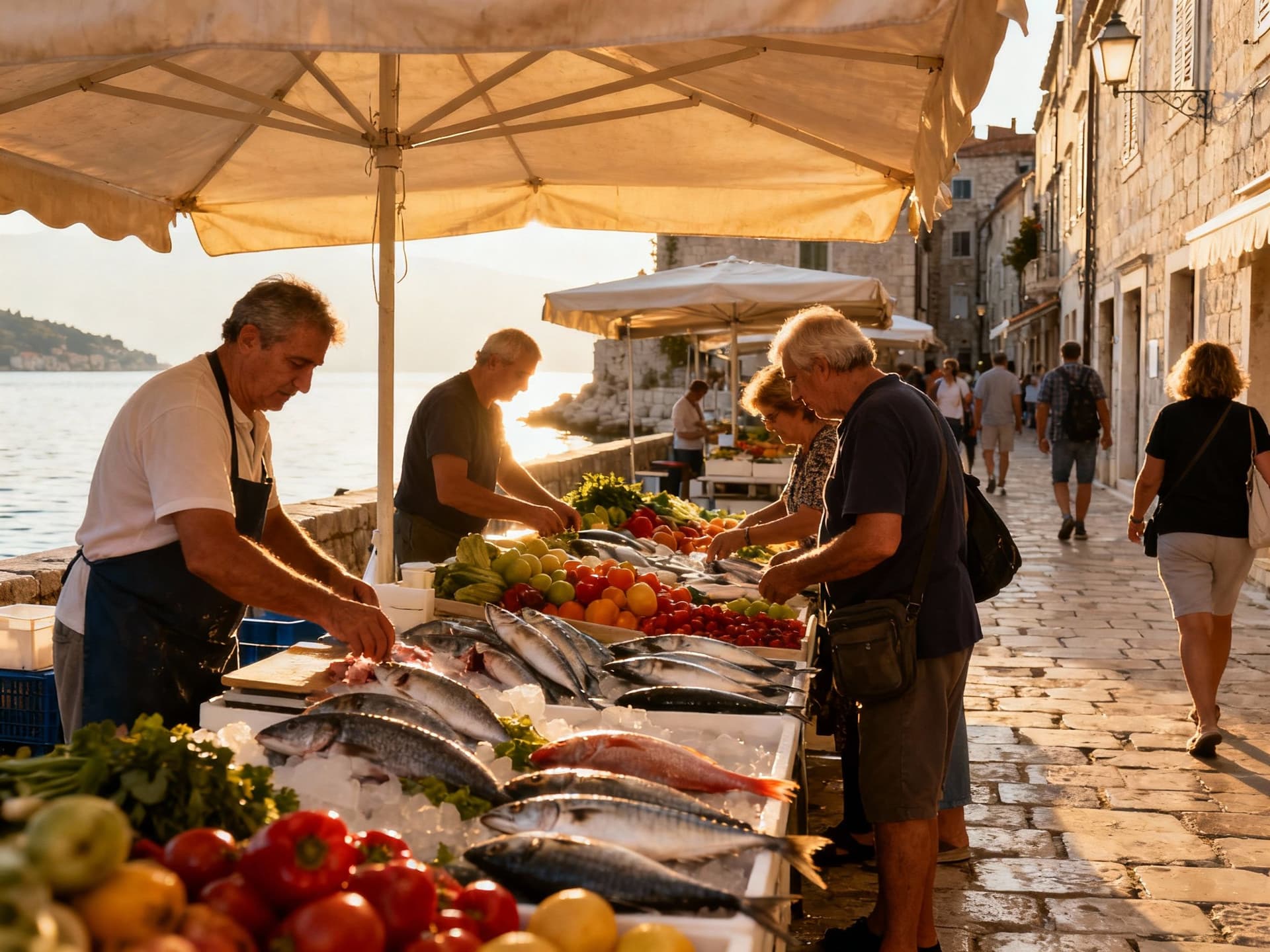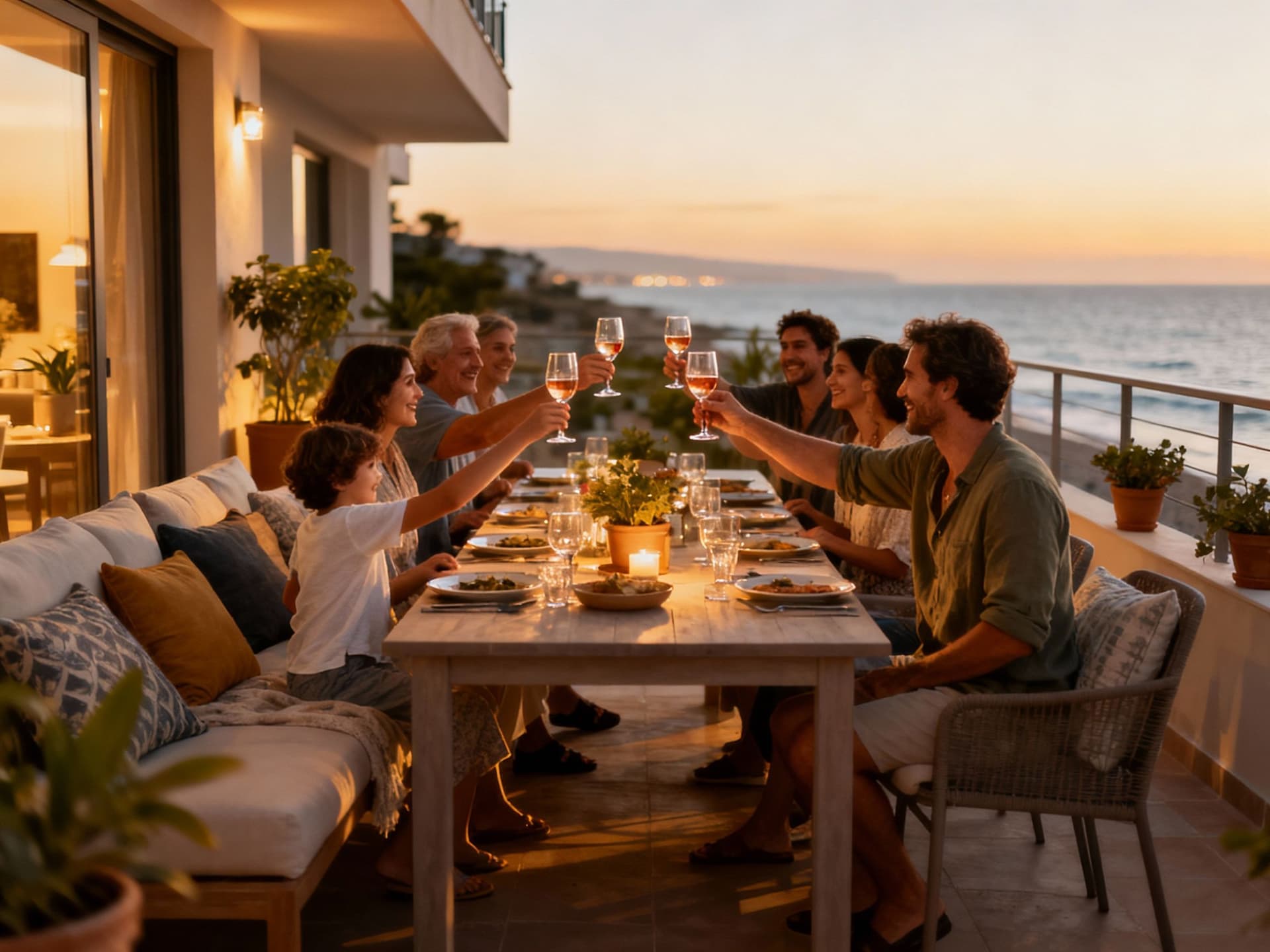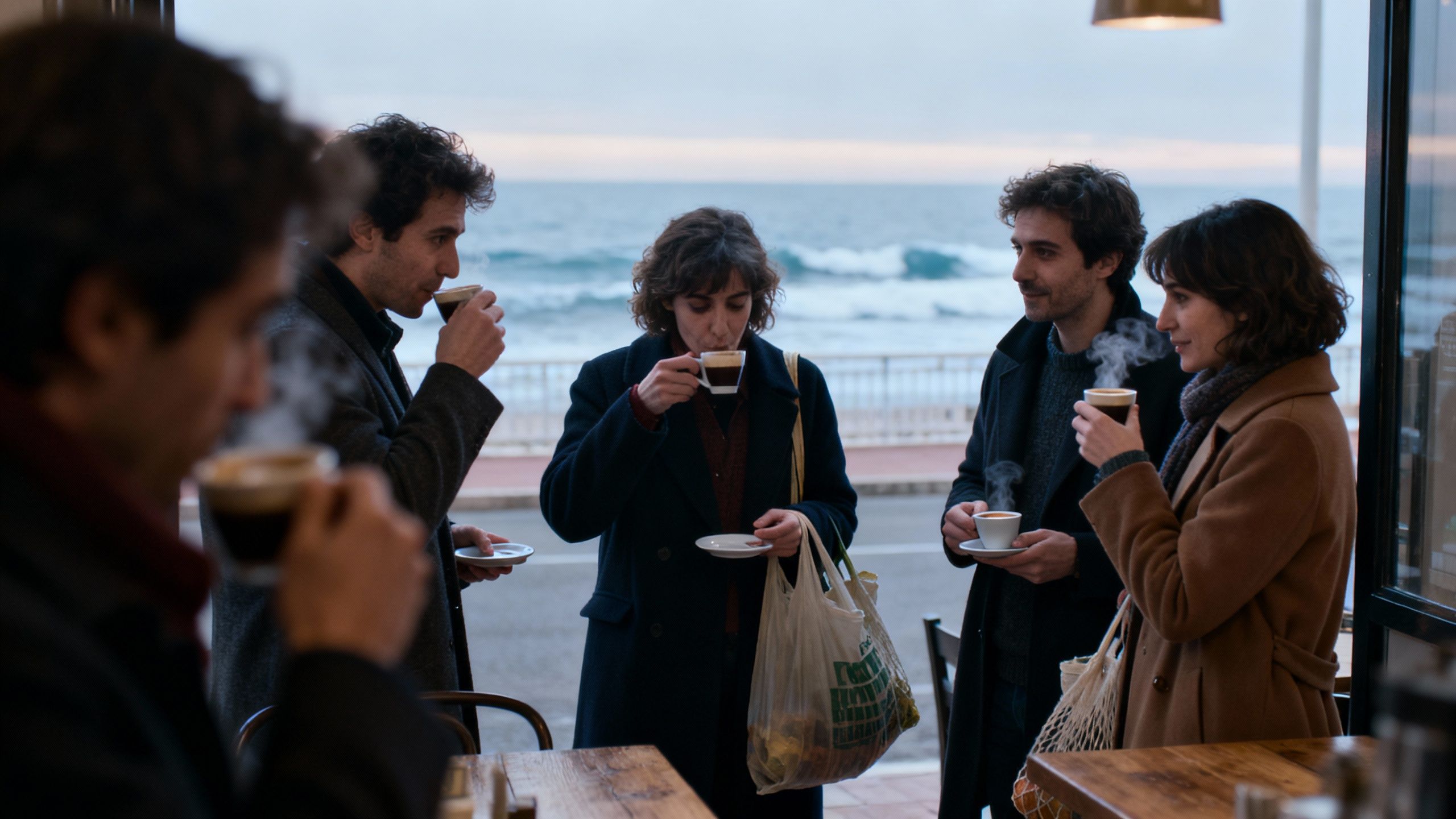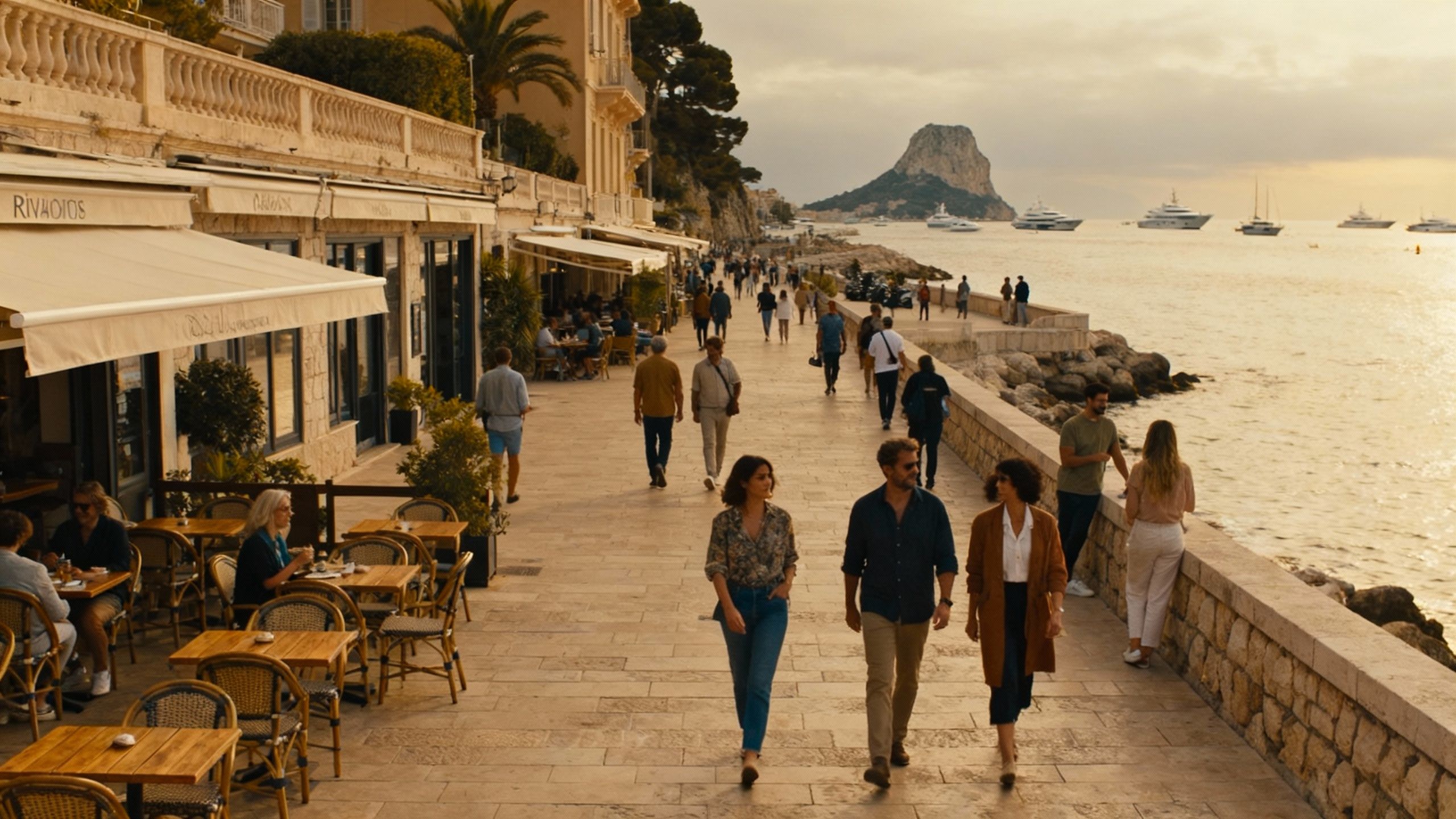Croatia: Love the Life — Check the Records
Croatia’s coastal charm is real — but buyers must pair seasonal lifestyle insight with cadastre, title and tax checks. Reconcile local rhythm and registry before you sign.
Imagine sitting at a marble table in Split’s Varoš quarter, espresso steaming, while fishermen haul in the morning catch and a real‑estate agent pulls up transaction records on a tablet. Croatia feels immediate: stone streets, Adriatic light, markets that dictate the week. But the good life and clear paperwork don’t always arrive together. For international buyers the romance is real — as are a few structural quirks in disclosure, ownership records and emerging tax policy that will shape value over the next five years. This guide pairs the sensory with the specific: how Croatia’s everyday rhythms connect to what you should verify before you sign.
Living the Croatia lifestyle

Morning in Croatia varies by address. In Zagreb you’ll find cafés on Tkalčićeva full of students and architects; in Rijeka the port brings a working rhythm and shorter queues at trattorias; on Hvar and Brač terraces fill with northerners chasing sun. The Adriatic coast still sets the tempo: beaches and coves are social stages in summer and quiet, lived‑in spaces in winter. If you buy here, you buy into a seasonal heartbeat — summers spike rental demand and local prices; winters show the true cost of year‑round living (heating, maintenance, fewer services). That rhythm should shape where you look, and what you expect from a property.
Neighborhood spotlight: Split — Varoš to Znjan
Varoš and the old town offer steep lanes, stone houses and a walkable life where you can be at the fish market in five minutes and at the Riva in ten. Znjan and the outskirts trade charm for modernity: beachfront promenades, newer apartments and easier parking. Locals buy on narrow streets for proximity; investors prefer the newer waterfront pockets for short‑term yields. Both have different transparency needs: older properties often require deeper title checks and renovation permits; newer builds come with clearer documentation but different local taxes and homeowner association rules.
Food, markets and the social ledger
Saturdays mean markets: Dolac in Zagreb, Pazar in Split, Ploča in Dubrovnik. These are community anchors and a quick test of neighbourhood life. You’ll meet neighbours, learn where deliveries arrive, and spot maintenance patterns (which properties look cared for). For buyers, time spent here is research: a lively market signals active community life; an empty square can point to seasonality. Food culture also exposes hidden costs — if a location’s supply chain is seasonal, expect higher prices for winter groceries and longer maintenance lead times for contractors.
Lifestyle highlights
Walk the Riva in Split and note which apartment blocks get morning deliveries — it reveals access and service patterns.
Shop at Dolac market (Zagreb) or Pazar (Split) to test winter supply reliability and local transport.
Spend an afternoon at a local café (Tkalčićeva, Split’s Peristil) — see who’s local, who’s seasonal, and what properties nearby feel lived in.
Making the move: practical considerations

Croatia’s housing market has been firm: Eurostat and national indices show consecutive annual gains into 2024–25, particularly on the coast and in Zagreb’s central districts. Rising prices are real, but so are regional differences — island villages, inland towns and larger urban centres move on different timetables. Matching lifestyle intent to the correct market segment avoids overpaying for seasonal glamour when you actually want year‑round community.
Property styles and how they map to life
Stone townhouses deliver atmosphere but often carry hidden costs: structural work, historic‑area rules, and complex land‑registry histories. Modern seafront apartments offer simpler titles but higher communal fees and seasonal rental competition. If your image of Croatia is terrace dinners and sea views, pick properties with outdoor space that are properly insulated and have legal access to the foreshore or promenade; that is often where disputes and unexpected costs arise.
Working with local experts who know the lifestyle
Local agents and lawyers are far more than finders. They translate neighbourhood nuance into contract terms: who pays for winter water shut‑offs, how short‑term rental bylaws are enforced, whether an apartment’s parking is legal or informal. Recent policy discussion in Zagreb about shifting tax burdens onto property (reported by Reuters) shows how quickly rules can affect net returns — an advisor who reads municipal minutes and explains likely exemptions is worth their fee.
Steps to align lifestyle with clear title
Visit the property across seasons to observe supply, noise and service frequency.
Order a full land‑registry and cadastre extract and reconcile them with the seller’s deed; insist on an up‑to‑date cadastral map extract.
Check municipal planning records for pending zoning changes and short‑term rental regulations.
Contract a local lawyer to verify any historical renovations and ensure permits exist for major works.
Insider knowledge: transparency, red flags and how to read them
Croatia’s cadastral and land‑registry systems are modernising. The State Geodetic Administration and joint information systems have improved access to parcel and title data, but inconsistencies can remain between the cadastre and land registry in some municipalities. That gap is where many buyers encounter surprises: unregistered partitions, informal access ways, or mismatched boundaries. Use the public electronic cadastre as a first check, but always follow with certified extracts and local on‑the‑ground verification.
Common red flags from the field
Old title sequences with multiple partial transfers — may indicate unresolved inheritances or undeclared rights.
Parking or foreshore access described verbally but not registered — practical rights that often create disputes.
Properties shown as renovated without building permits — costly to regularise and sometimes impossible in protected historic zones.
Legal and residency notes that shape transparency
Croatia’s entry into the euro and Schengen has reduced currency friction and made travel simpler for EU buyers — practical positives that increase demand in certain coastal pockets. Non‑EU buyers still face additional procedural steps: where reciprocity rules apply, purchase of agricultural land or certain coastal plots can require ministerial approval. That extra layer means timeline uncertainty; factor it into negotiations and closing schedules.
Quick market reality check: Croatia’s house‑price indices show double‑digit annual gains in recent quarters in several regions, especially the coast and Zagreb. That trend supports values for lifestyle properties but raises the bar for yield‑seeking investors, who must model new tax proposals and seasonal vacancy into returns. Use official indices to benchmark offers and incorporate conservative occupancy assumptions for island and tourist towns.
Conclusion: fall in love, then verify
Croatia delivers an immediate, sensory appeal few countries match: markets, sea, and a social tempo that makes day‑to‑day life small and human. That attraction is the right place to start. But do the practical checks that turn romance into ownership: reconcile cadastre and land registry extracts, confirm permits, model new tax scenarios, and allow time for ministerial approvals for non‑EU purchases where required. Work with local advisers who read neighbourhood life as well as legal documents — they translate atmosphere into enforceable terms. Visit across seasons, request certified records, and ask how a place performs in January as well as July. Then, when the numbers line up, you can buy the life you fell for with confidence.
Swedish expat who moved from Stockholm to Marbella in 2018. Specializes in cross-border legal navigation and residency considerations for Scandinavian buyers.


